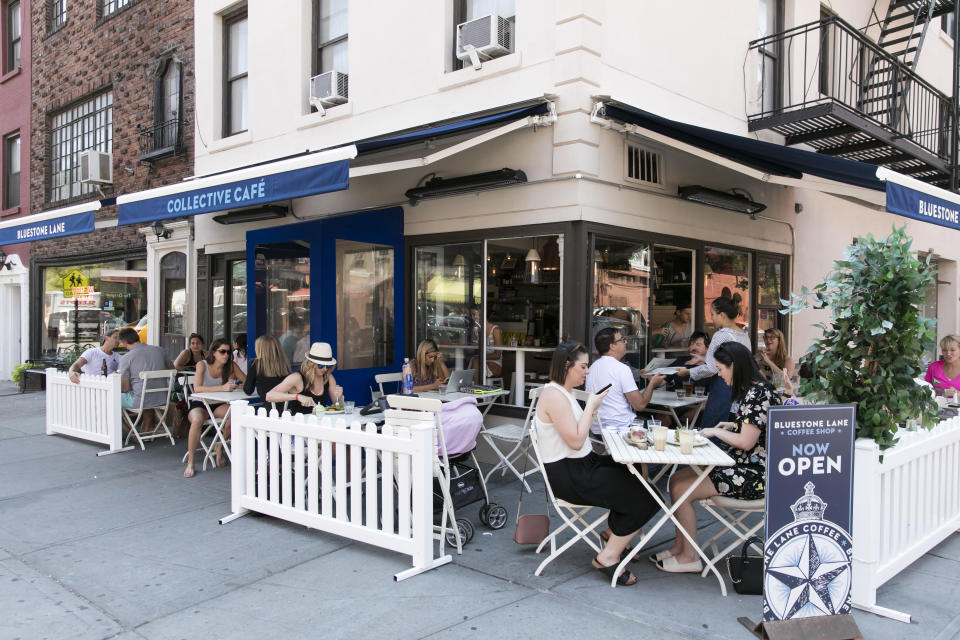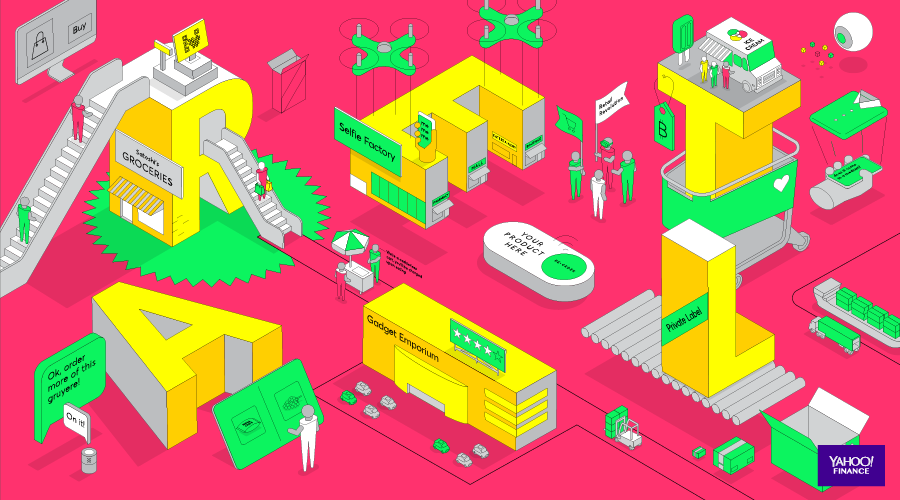Here's what happens when a business gets rid of cash
If you try to pay for your coffee at Bluestone Lane in New York City with cash, you will be gently told that cash is not accepted — and asked if you have a credit card.
Occasionally, this can lead to mild confrontation (“Whaddayamean you don’t take cash?”) from someone unfamiliar with the cashless policy, but for the most part it has started to help streamline businesses within the past two years.
Across the country, chiefly in cities, a growing number of businesses are electing to go cashless for a number of reasons. According to Jesse Dorogusker, head of hardware at Square (SQ), which handles the payments for more than two million small businesses, cashless has the beginnings of a trend as more and more businesses decide that the pros of going cashless outweigh the cons.
“People have long underestimated the cost of accepting cash,” Dorogusker told Yahoo Finance. “Now we see sellers realizing that cash isn’t free.”
Cash may be cheaper than credit and debit cards in terms of the fees they carry for hardware and processing, but some businesses have realized — after heavy consideration — that they’d be better off leaving cash behind.
Why some businesses are ditching cash
At the time Bluestone Lane switched its dozen-plus locations over to cashless in September 2016, only 10% of transactions were made in cash, making the change not a particularly big one. According to Andrew Stone, Bluestone Lane’s marketing director, dealing in cash felt cumbersome from a transactional standpoint, from a health standpoint — cash is dirty — and a logistical standpoint, as guarding and transporting cash is often a significant hidden cost.
Nowhere is this more pronounced than for food trucks, which are more vulnerable and have even more logistical concerns. At Se?or Sisig’s, a San Francisco-based network of five Filipino fusion food trucks, cash made up 19% of its payment mix when it decided to move to a cashless system.
“Every year it was dropping 5% to 10%. Soon enough we were going to be less than 10% cash,” said Evan Kidera, one of the founders of Se?or Sisig.
Square has borne data on the move to cashless out on a large scale. According to Dorogusker, there is a strong trend towards credit cards across the board. Both businesses told Yahoo Finance cards were faster, simpler, and easier.
“It was mostly cash, then 50-50, and now we’re seeing card and preference for card,” said Dorogusker.
With a dwindling amount of cash customers, it just wasn’t worth it for Se?or Sisig and Bluestone Lane to accept bills. For Se?or Sisig, the amount of cash that had to be handled for the entire network of food trucks was onerous: counting cash at the moment of sale and then making the rounds to collect, recount and recheck total sales from each food truck at Se?or Sisig main headquarters.

“You’re talking about three hours of counting in and out,” said Kidera. “We were spending over 40 hours a week counting cash just at the hub. It felt like we were running a bank.”
Square’s Dorogusker noted that both the old cash-only businesses and the cashless upstarts actually come from the same place — practicality.
“If you’re not operating at scale, you can count the money, so again it’s not an unreasonable impracticality,” he said. But some business are waking up to the “ignored cost” of cash.
“If you zoom out, might think the calculation of handling cash is too expensive and the 2.75% on a credit card transaction and benefits from digitized payments are worth it,” said Dorogusker.
The transition has been smooth
The month before the change, Se?or Sisig began notifying people via social media, newsletters, and telling customers at the food truck in-person.
Not surprisingly, no one said anything until the change had been made, but Kidera said that heavy signage warning customers that cash isn’t accepted has made things easier.
“Most of the feedback has been great, but some people don’t agree with the change,” he said. “For the most part once we talk to them and give them more info on why we went cashless they tend to understand.”
For the employees, the change has been a welcome one. Kidera said that tips from cards and other cashless means are generally six times higher than cash, and the no-cash signage makes it very clear that the only things on board are delicious food and a few card reader tablets.
Bluestone Lane, which had a four-month grace period where they’d still take cash, was nervous to see how cashless would be accepted, but was pleasantly surprised. Of course, a select few customers were miffed.
“I wouldn’t say we didn’t have anyone write in to say cash money is legal tender,” said Stone, who noted that tips didn’t change, but sales sped up.
(While the U.S. dollar is “legal tender for all debts public and private,” the U.S. Treasury website FAQ notes that there is “no federal statute mandating that a private business, a person or an organization must accept currency or coins as payment for goods and/or services.”)
As it stands, businesses like Se?or Sisig and Bluestone Lane are joined by the likes of Starbucks and Sweetgreen. In a larger context, however, since the number is still small, cash is certainly not on notice. And that may be a good thing, as cash is still king for many people like children who don’t yet have cards or the underbanked who don’t have access to the cashless financial system. But as a pilot, the reviews are in — and they’re good.
Ethan Wolff-Mann is a senior writer at Yahoo Finance focusing on consumer issues, tech, and personal finance. Follow him on Twitter @ewolffmann.
This story is a part of Yahoo Finance Presents: The Retail Revolution, March 5-9, 2018.
